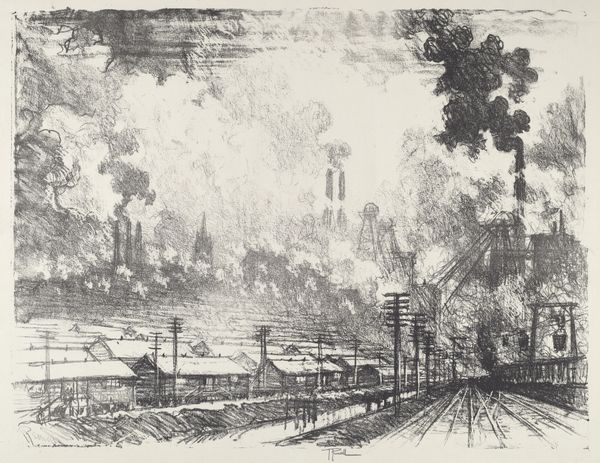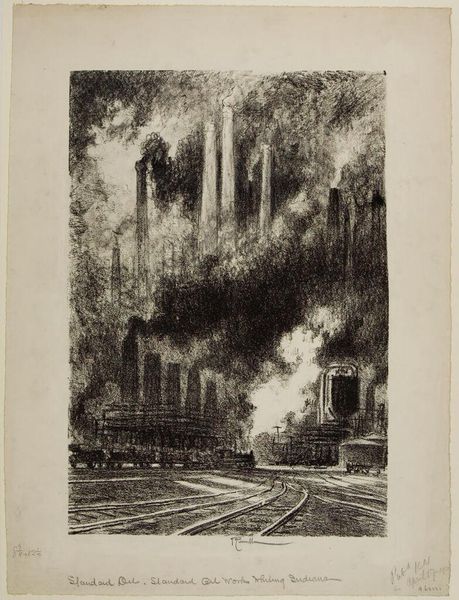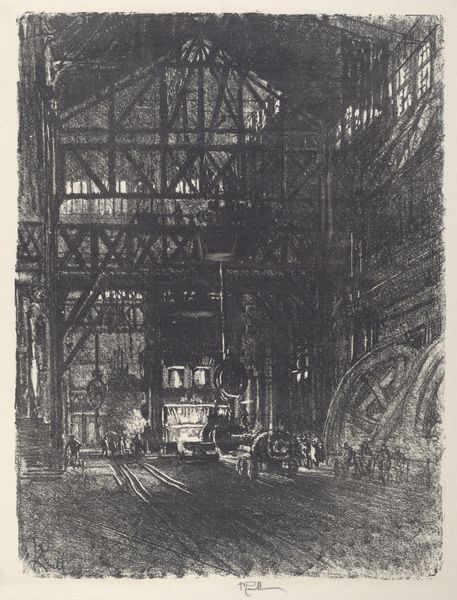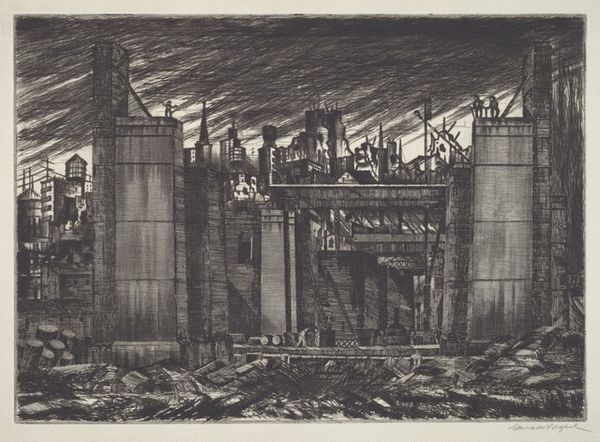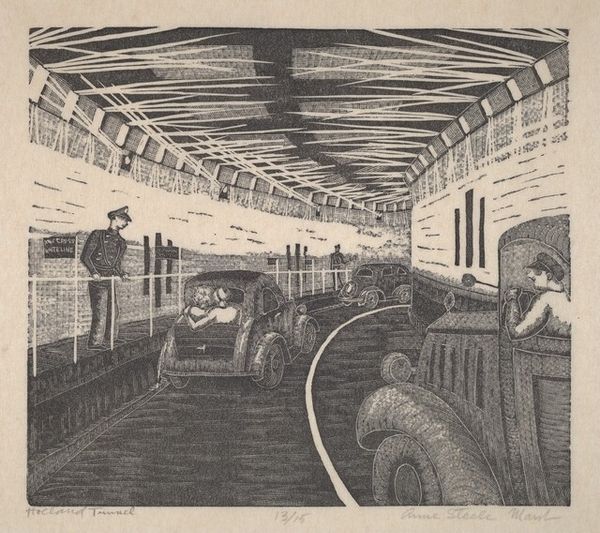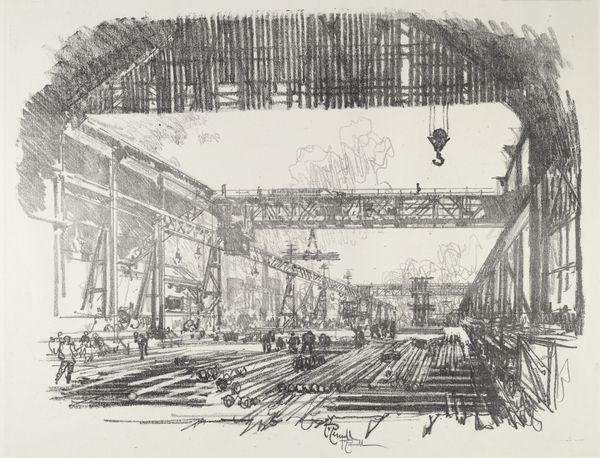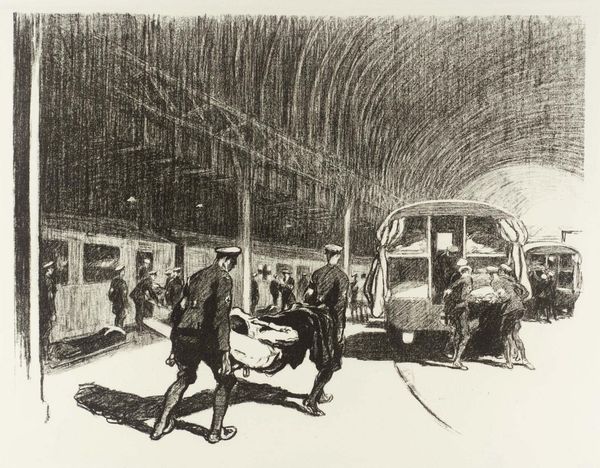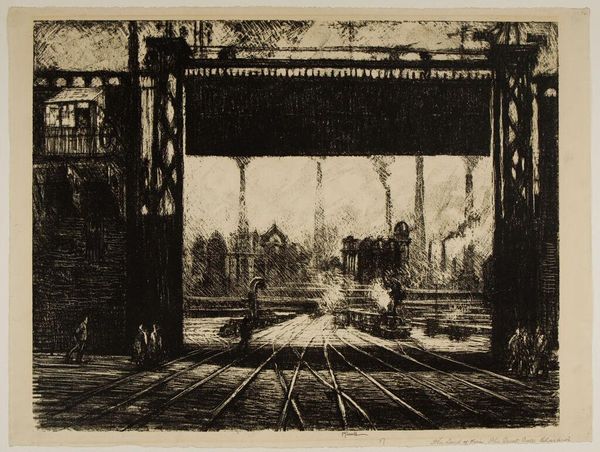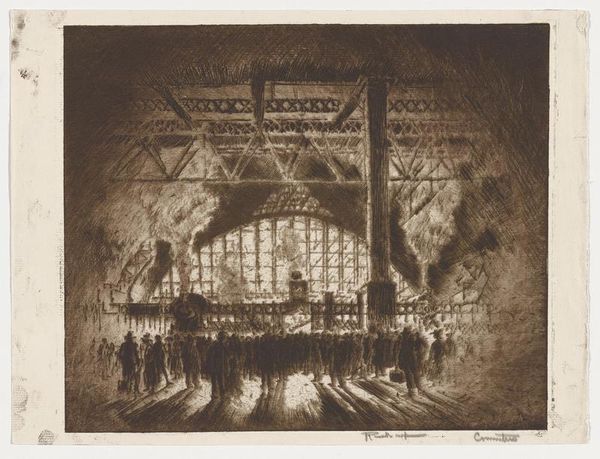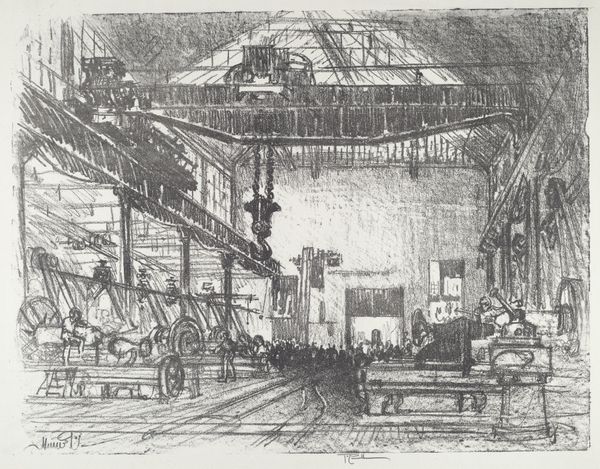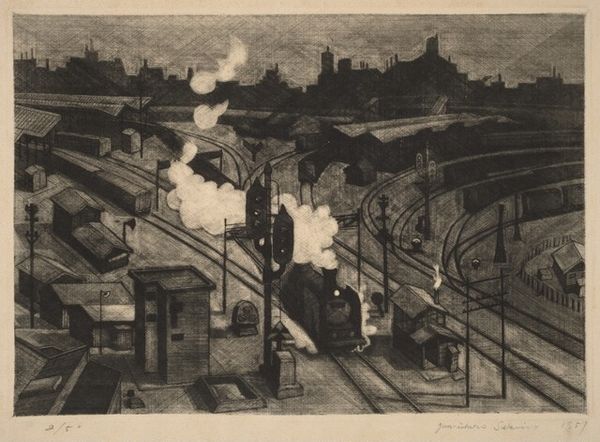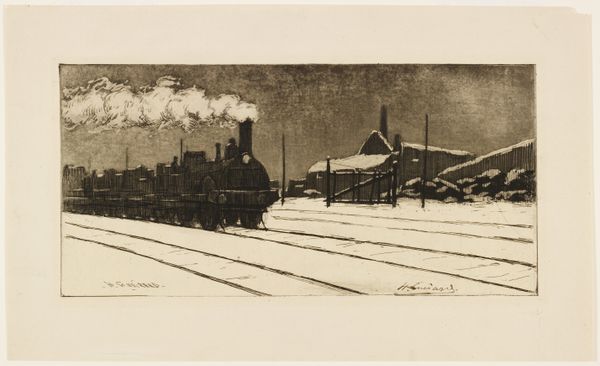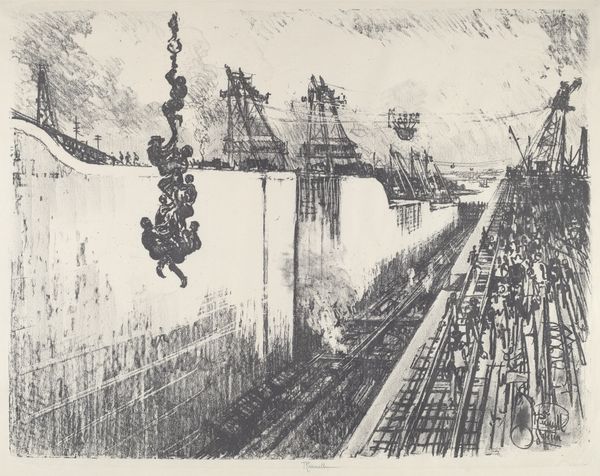
print, etching
# print
#
etching
#
united-states
#
line
#
cityscape
#
realism
Dimensions: 9 15/16 x 11 3/4 in. (25.24 x 29.85 cm) (plate)10 11/16 x 13 7/8 in. (27.15 x 35.24 cm) (sheet)
Copyright: No Copyright - United States
Curator: Joseph Pennell's 1919 etching, "The Trains that Come," housed here at the Minneapolis Institute of Art, depicts a bustling train station. Editor: It feels like entering a hazy dream, this image. The dense layering of etched lines creates such an atmospheric scene. I can almost hear the echo of the steam and feel the jostling crowd. Curator: Pennell was deeply fascinated by industry and engineering; we see this preoccupation with modern infrastructure reflected here in his rendering of the immense architectural elements, the powerful locomotives and all of this belching smoke. Think about the copper plate and the corrosive process of etching needed to even produce an image like this at the time. Editor: Precisely. And situating this piece within its time—post World War I—reveals its profound implications about labor, mass movement, and perhaps, even anxiety. Pennell seems to highlight the almost dehumanizing effect of progress and industrialisation on society, all conveyed through this somewhat bleak, almost dystopian cityscape. Curator: I appreciate your reading of the anxiety present in Pennell’s work, yet he was known for his almost propagandistic celebration of industrial might! Note the sublime architectural detail of the station roof itself. Etching allows for capturing the precision of each individual girder—reflecting both industrial pride and faith in the potential of machine-age infrastructure. Editor: Yet, even with Pennell's pro-industry leanings, there's no escaping the sheer volume of bodies depicted—anonymous, hurried. The repetitive marks mirroring, perhaps, repetitive and strenuous working conditions. And don't forget the gendered dynamics; who is afforded travel, and leisure? The visual language is embedded in power structures that are inherently inequitable. Curator: An incisive interpretation, bringing into the foreground issues often overlooked when discussing depictions of modernity. Perhaps, instead of seeing Pennell as merely celebratory, we can view him as a chronicler of his time, documenting the rapid and sometimes overwhelming shifts brought about by industrial progress. Editor: A necessary nuance, certainly. Seeing the artist as embedded and shaped by the forces around him invites a more engaged approach in decoding what could be construed, at first glance, as simple progress-led urban dynamism. Curator: Ultimately, considering materials alongside context allows us to read not just what the artist *intended,* but what the work *reveals* about the intricate socio-technical realities of its moment.
Comments
No comments
Be the first to comment and join the conversation on the ultimate creative platform.
